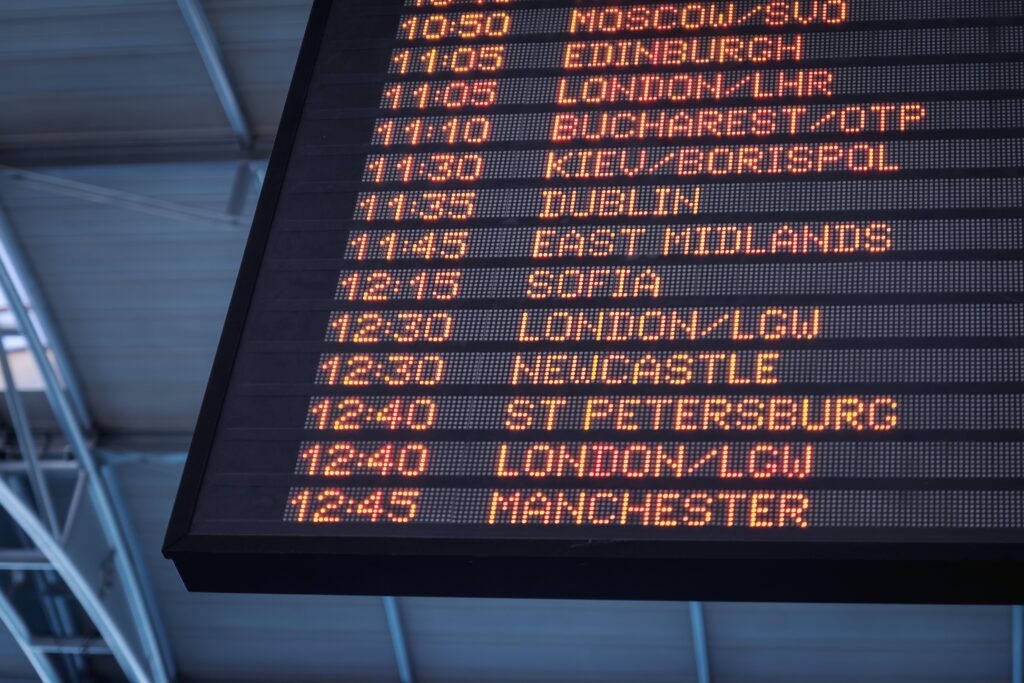Nicaragua Transportation Guide
Nicaragua Transportation Guide: Embrace local buses, choose shuttles for comfort, negotiate taxi fares, and explore freely with rental cars.


Nicaragua Transportation Guide – International Airports
Nicaragua has several international airports that serve as gateways to the country. Here are the major international airports in Nicaragua:
Augusto C. Sandino International Airport (MGA): Located in the capital city of Managua, Augusto C. Sandino International Airport is the primary and busiest international airport in Nicaragua. It offers a wide range of domestic and international flights, connecting Nicaragua to various destinations in North, Central, and South America, as well as Europe.
Daniel Oduber Quirós International Airport (LIR): Although not located in Nicaragua, Daniel Oduber Quirós International Airport serves as an important airport for travelers visiting the northwestern region of Nicaragua, especially the popular tourist destination of San Juan del Sur and the surrounding area. It is located in Liberia, Costa Rica, close to the Nicaragua border.
Aeropuerto Internacional de Managua (formerly Aeropuerto Internacional Augusto C. Sandino): Situated in Managua, this airport is also known as the “Managua International Airport.” It primarily serves as a regional airport, handling flights to and from neighboring countries in Central America.
These airports provide connectivity to international destinations, facilitating travel to and from Nicaragua. It’s important to note that flight availability and destinations may vary, so it’s advisable to check with airlines or travel agencies for the most up-to-date information when planning your trip.
National Airports
In addition to the international airports, Nicaragua has several national airports that serve domestic flights within the country. Here are some of the major national airports in Nicaragua:
Corn Island Airport (RNI): Located on Big Corn Island in the Caribbean Sea, Corn Island Airport serves as an important domestic airport, connecting the Corn Islands to the mainland of Nicaragua. It offers flights to and from the capital city of Managua.
San Carlos Airport (NCR): Situated in San Carlos, a town in the southern part of Nicaragua near the border with Costa Rica, San Carlos Airport serves as a gateway to the Solentiname Islands and the Rio San Juan region.
Bluefields Airport (BEF): Located in Bluefields, a coastal city on the Caribbean coast of Nicaragua, Bluefields Airport serves as the main airport for the region. It provides domestic flights connecting Bluefields to Managua and other destinations within Nicaragua.
Puerto Cabezas Airport (PUZ): Situated in Puerto Cabezas, a city on the northeastern coast of Nicaragua, Puerto Cabezas Airport serves as an important domestic airport for the region, providing flights to and from Managua and other cities within the country.
Rosita Airport (RFS): Located in Rosita, a town in the northeastern part of Nicaragua, Rosita Airport serves the local community with domestic flights to and from Managua and other destinations in the country.
These are some of the major national airports in Nicaragua that cater to domestic air travel within the country. They play a vital role in connecting various regions and facilitating transportation for local residents and tourists exploring different parts of Nicaragua.
Nicaragua Transportation Guide – Trains
Nicaragua does not have an extensive passenger train network. The country’s railway system has historically been limited and primarily used for freight transportation. However, there have been some recent efforts to revive passenger train services in certain areas. Here are a few notable train projects in Nicaragua:
Tren Turístico Granada: The Tren Turístico Granada is a tourist train that operates in the city of Granada. It offers scenic rides for visitors, allowing them to explore the city’s surroundings and enjoy views of Lake Nicaragua. The train runs on a restored section of the historic railway.
El Chepe: While not in Nicaragua, it is worth mentioning the Ferrocarril Chihuahua al Pacífico, also known as El Chepe. This train journey starts in the city of Chihuahua, Mexico, and travels through the scenic Copper Canyon region, crossing into Nicaragua’s neighboring country, Mexico. It offers stunning views of the canyon landscapes.
It’s important to note that these train services are limited in scope and cater mainly to tourists. Nicaragua does not currently have a comprehensive national passenger train system for widespread public transportation. Most travelers rely on buses, taxis, or private vehicles to get around within the country.


Nicaragua Transportation Guide – Buses
Buses are the primary mode of public transportation in Nicaragua and are widely used for both short and long-distance travel. The bus network in Nicaragua consists of various types of buses, including local buses, intercity buses, and express buses. Here’s an overview of the bus system in Nicaragua:
Local Buses:
Local buses, often referred to as “urbanos” or “microbuses,” operate within cities and towns, providing transportation for residents and commuters. These buses are typically smaller and cover shorter distances, making frequent stops along their routes. They are an affordable means of transportation within urban areas.
Intercity Buses:
Intercity buses connect different cities and towns in Nicaragua, offering a more extensive network for travel between destinations. These buses are larger, more comfortable, and often equipped with air conditioning. They operate on scheduled routes and provide services to popular tourist destinations as well.
Express Buses:
Express buses, also known as “rapiditos” or “directos,” are a faster and more direct option for intercity travel. These buses generally have fewer stops and make faster journeys between major cities. They are a popular choice for travelers who want to reach their destinations more quickly.
Chicken Buses:
Chicken buses are a unique feature of the bus system in Nicaragua. These brightly painted former U.S. school buses are often repurposed and used for public transportation. They are called “chicken buses” because passengers sometimes bring chickens or other livestock on board. While they may lack some comforts, they are an affordable and widely used option, especially in rural areas.
It’s important to note that bus schedules and conditions can vary, and it’s advisable to check with locals or bus stations for the most up-to-date information. Additionally, bus travel in Nicaragua can sometimes be crowded, so it’s a good idea to arrive early to secure a seat, especially during peak travel times.
Links of interest
Airlines:
Ride-Sharing:


We recommend
Nicaragua travel tips
Our guide offers essential Nicaragua travel tips and insights for an unforgettable journey. Plan your trip with us!
Nicaragua Transportation Guide – SIM Cards
Traveler’s Guide to Nicaragua SIM Cards:
Providers:
Choose from Claro, Movistar, or Tigo for widespread coverage across Nicaragua.
Purchase Points:
Buy SIM cards at airports, official stores, or authorized retailers.
Identification:
Bring a valid ID or passport; registration may be required for SIM activation.
Top-Up Options:
Recharge credit at kiosks, convenience stores, or through provider apps.
Data Plans:
Select data plans based on your needs, available for various durations.
Phone Compatibility:
Ensure your phone is unlocked to use a local SIM card.
Coverage:
Major cities usually have good network coverage; rural areas may vary.
Portable Wi-Fi Devices:
Consider portable Wi-Fi devices for multiple device connectivity.
Emergency Services:
Save local emergency numbers and know how to contact your service provider.
Check Balance:
Regularly check your balance to stay informed about your usage and credit.
Currency Converter
Currency Converter EUR/USD: Sun, 8 Jun.
Unit Converter
Nicaragua Transportation Guide – Maps
What map do you need?
Choose your destination
More information about this country





